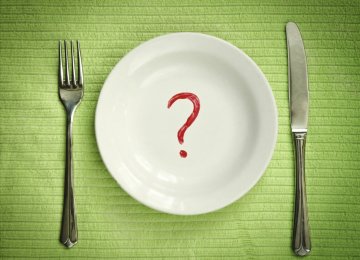The Health Ministry has developed plans to prevent food insecurity in provinces that are struggling with drought for several years in a row such as Sistan-Baluchestan, Kohgiluyeh and Boyer Ahmad, Hormozgan, Bushehr, Kerman, Bandar Abbas, and Ilam.
Zahra Abdollahi, director general of the Health Ministry’s Nutrition Department said, “We will raise people’s awareness on sustainable eating—both environment and health-wise—and how to make the best use of the available food resources to prevent malnutrition and vitamin deficiencies.”
Promoting consumption of healthy food produced locally and training people to avoid food wastage are among the programs to be carried out in the affected regions, she said, ISNA reported.
Eating more healthfully and reducing food wastage is possible by moving to more resource-efficient (and healthier) diets, experts say.
Calling for readapting farming activities in drought-prone regions, Abdollahi said, “Around 50 liters of water is used to cultivate one kg of legumes, while 25,000 liters is needed for production of one kg of red meat; so farmers should adapt strategies that are most appropriate in drought situations so as to prevent food insecurity.”
Referring to the ministry’s food fortification plan, she said soon all edible oils in the market will be supplemented with vitamin A and D. “The ministry’s goal is to increase people’s vitamin intake by adding them to different food products.”
In December she had said that the rate of food insecurity in Iran is low, standing at 5%.
Noting that the country is facing a growing rate of obesity and overweight rather than food poverty, she said the low rate of food insecurity pertains to a number of underprivileged provinces, particularly in the south and southeastern regions.
Several converging threats—from climate change, population growth and unsustainable use of resources—are steadily intensifying pressure on humanity and world governments to transform the way food is produced, distributed and consumed.
About 800 million people worldwide do not get enough food to eat, while about 1.5 billion are overweight.






Add new comment
Read our comment policy before posting your viewpoints